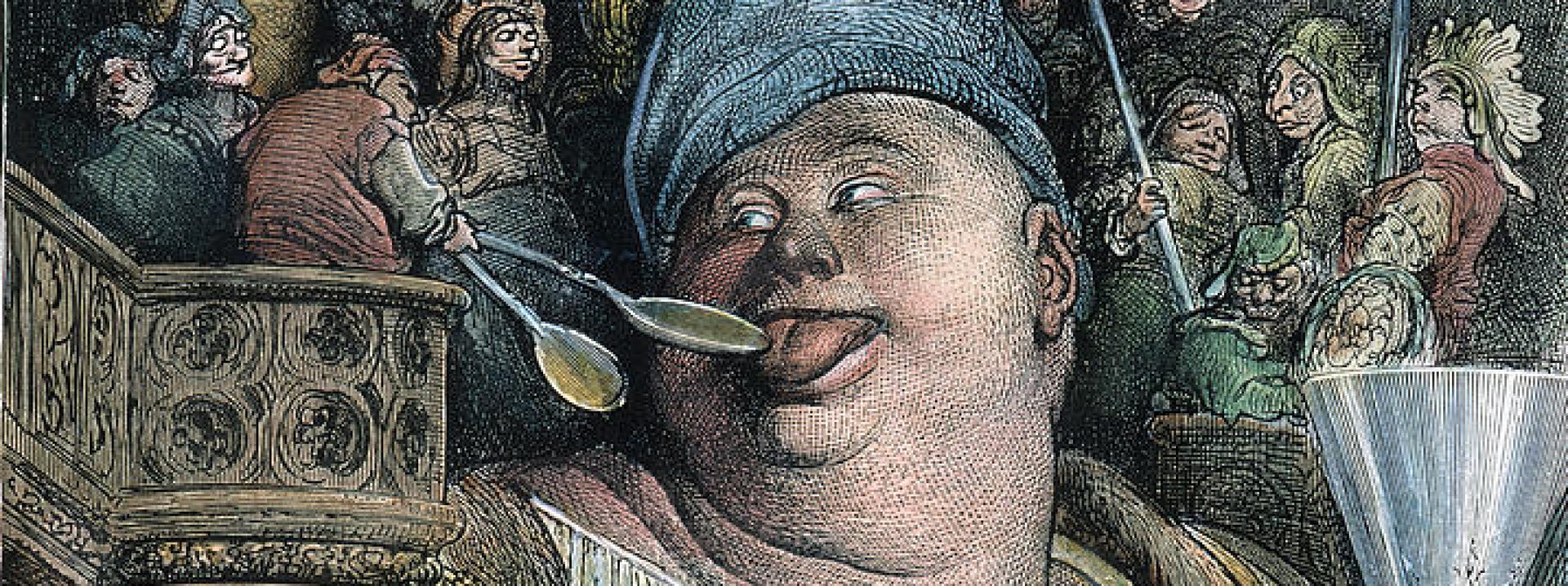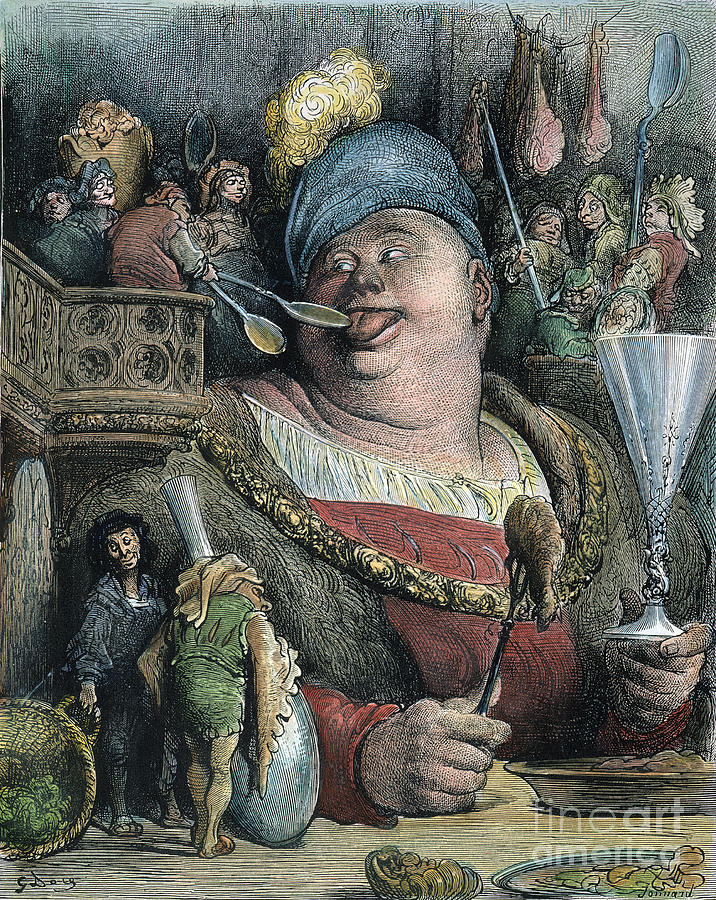Hi everyone! This appetizer is going to focus on the cult film The Rocky Horror Picture Show and its connection to our established characteristics of the carnivalesque and grotesque.
To begin, I want to give you all a brief history and explanation of the show, both as a theater production and a cult film. It was created in 1973 as a stage production and produced into a movie in 1975, and it is then when its popularity skyrocketed and achieved cult status. The plot is a parody and tribute to the period from the 1930s to the late 1960s in which many science fiction and horror movies (good and bad) were produced: it centers around the newly engaged Brad and Janet who get detoured at the mansion of Dr. Frank N. Furter, an eccentric transvestite scientist who is building himself a boy-toy in his lab, on their way to see their science teacher in whose classroom they met.
The stage production was highly interactive, where theatergoers were encouraged to dance along in the aisles and even bring umbrellas for the antics that would happen throughout the show. In addition to this, extras in the movie were representative of not only different races, but body shapes, ability, sex, and age. (I’m not requiring it, but you might be able to see this diversity more clearly in the “Time Warp” scene, which is also the dance audience members participated in: https://www.youtube.com/watch?v=umj0gu5nEGs)
As I hope you’ve gotten the sense, this particular play has a lot to unpack and we could talk about a lot of things. What I want to focus on, however, is the character of Dr. Frank N. Furter and his connection to the production. The clip I’m asking you to watch is the first time that the audience meets Frank, where he sings “Sweet Transvestite,” his standard antagonist introduction song. Some questions you might think about are:
- Thinking back to Bruegel, do you think that Dr Frank N. Furter is a “King Carnival” character among those in the scene?
- As an extreme foil to the heteronormative Brad and Janet, does Frank add comedy to the scene by being a transvestite, or is it Brad and Janet in their horror who do?
- More generally, from its history and the clips that you’ve seen, do you think that Rocky Horror is carnivalesque? Is it grotesque? Why or why not?
- Can a production such as this count as a modern version of the parody Bakhtin describes as carnival?
Here is the link to “Sweet Transvestite”: https://www.youtube.com/watch?v=bc80tFJpTuo
I look forward to seeing your interpretations and thoughts!


Your question about whether Frank or Brad and Janet is the source of comedy really struck me, and as I was watching, I think it’s a little bit of both, but mostly Frank. The camera is on Frank most of the time, and focuses on his eccentric behavior/dance moves/lyrics, while only briefly panning away to the pair for reaction shots. Obviously Janet fainting when he first comes down the elevator is pretty hilarious, but besides that it’s just a few wide eyed faces/open mouths which (to me) felt more staged than real.
The whole thing is very carnivalesque, and I think Janet and Brad give pretty normal carnival reactions: interested and entertained, even if horrified (but they can’t look away!) I’m not sure if horror can fit into a carnivalesque scene as Bakhtin describes it, but I think there had to have been times where the shows/songs/dances were a little too much for some people!
I don’t know much about The Rocky Horror Picture Show, but I’ve always felt like it was owned by the queer community to a degree. Although Frank might be the villain in the plot, he is also the beloved icon of the movie. I have never seen the Rocky Horror Picture Show, but I have surely seen that character. I’ve seen people dressing up as him, celebrating him and the movie in general.
I think who is funny in the movie depends on who you identify the most with. As a queer woman, I definitely saw humor in the shocked responses of Brad and Janet. I think a lot of folks in the LGBT community can identify with mainstream folks being shocked while you’re just living your life (although in Frank’s case, it is a very colorful life).
I think that a lot of the comedy in this scene stems from Brad and Janet’s presence in the room as the representation of a mainstream or stereotypical couple in a world of eccentricity and the bizarre. Their reactions to their surroundings (Janet especially) are that of disgust, intrigue, surprise, and excitement––all over a course of a few minutes. Not to mention, they are the odd ones out in this scene as the carnivalesque characters make up the majority of the crowd.
I think I agree with both of you! The extremity of both sides and their meeting in one place adds the comedy, both because Janet seems completely and over-dramatically horrified, but also because Frank knowingly plays off of their foreignness among his own “foreigners.”
To bring the conversation to an even more modern place, I want to look more closely at Frank and connect him to practices that we see in our own society. While being a transvestite is not the same as doing drag, do you think that since drag is a practice more culturally acceptable now, Frank’s non-conformity to masculine gender clothing would have such an effect today as it did to those in the film? Is to some extent drag carnivalesque?
If you want to think more broadly about it, do you think that our society today is in some ways carnivalesque because we normalize and have representation of people follow the same non-conformity as Frank, or is it because it’s a standard that we include it is not?
As a disclaimer, I really don’t have an answer about this myself since it is a huge undertaking, but I do think it’s an interesting conversation to have!
I think drag shows are definitely a carnivalesque setting, a place where marginalized folks can speak their own language and be themselves, inverting all types of social hierarchies. (This might be a redirection to your redirection, but ball culture ( https://en.wikipedia.org/wiki/Ball_culture ) originated around low income men of color and definitely had notes of carnivalesque!)
However, I want to push back against the idea that “our society” is more carnivalesque for accepting drag. Is our society the Bi-Co? Or America? Right now, I’m in very conservative Idaho. My town refused to allow Drag Queen Story Time at our library. We don’t have a pride parade. Although acceptance of LGBT culture is slowly happening, it’s not really there yet.
I think part of what makes drag and ball culture so carnivalesque is that the are a shelter from the larger, more harmful society.
I really like this question! I think that we are probably more carnivalesque, but for different reasons that Juliana latches onto. At carnival, everyone can participate, no one excluded, hierarchies are gone, etc,, and I that a carnivalesque society would be one that does represent non-conforming people such as Frank. Drag shows are more prevalent, there is more LGBT+ representation in the media, etc. Though not every aspect of our society is carnivalesque yet, I would say we are certainly more carnivalesque in respect to acceptance than we have been in the past (especially in the time of Rabelais!)
I agree with Juliana in the sense that drag it is hard to categorize drag as being conducted in a carnivalesque environment because of the varying degrees of acceptance across our communities. I think it can be easy to forget that the bi-co environment is far more accepting and tolerant than the majority of places; it is a bubble that can cloud our perception of the real world and it’s less pleasant attributes. That being said, one could also compare a drag show (even watching something like RuPaul’s drag race through a TV screen) to this bubble-like atmosphere in which there is no judgment. That is what I would consider being the most carnivalesque part of drag.
Interestingly enough, I don’t think that Frank is a “King Carnival.” I felt that in Bruegel’s painting, King Carnival is a main character with a wacky retinue (which does fit Frank), but there are also a lot people who are completely ignoring him and doing their own carnival-y things. Frank is the center of attention, and I felt (at least in “Sweet Transvestite”) that all the people in his house were waiting on him; he is actually in charge, and is master of the house. Also, Bruegel’s King Carnival has a counterpoint: Lent. I don’t think that the terrified couple fits that opposite character of Lent, and I don’t know that King Carnival can exist without him either.
This was a great appetizer post! Thank you, Alice, for introducing me to such an interesting show 🙂
After our discussion this week, I have been left wondering how carnival relates to subcultures and the greater mainstream culture. For example, I celebrate Day of the Dead with other Latinx people and I feel that its a very, very carnivalesque holiday for me. However, this isn’t a mainstream American holiday and offers a place for me to celebrate being latina. Subcultures events, while being very carnival, aren’t necessarily meant for everyone in the greater community. Does this fragmentation water down the carnival experience? How big does a community/region/group of people need to be in order to have a carnival moment?
I loved this appetizer post! Thanks for bringing Rocky Horror back into the front of my mind. I really enjoyed exploring the different sides of carnivalesque in a more contemporary light. I’d like to continue looking at mainstream media and other things that come up in everyday life that highlight the carnivalesque.
I think you all bring up really good points!
Hannah A., I think you have a point about Frank and King Carnival: having seen the entire movie, Frank really is like a king in his household where everyone obeys and follows him, so the comparison isn’t exact. To Juliana’s comment, I also think that to call our society carnivalesque can be too much of a blanket statement, but as you said, it doesn’t mean that some practices aren’t carnivalesque; reading the article on the history of ball culture, it seems like a direct link to carnival as a reversal of the aristocratic balls held by high society members! In respect to Hannah C.’s comment, I think that calling our carnival culture like a bubble hits the nail on the head because even in the original traditions of carnival, it would only last a moment and would only be acceptable for that moment like the fragility of a bubble being blown. It’s an interesting and really awesome simile for carnival!
Overall, I’m really happy with how this appetizer went. I think Juliana, Hannah A., and Hannah C. added a lot to my thoughts about this topic both on this thread and in our Zoom conversation. We hit all the points I wanted to talk about, and I learned a bit more about drag! As I said in my initial post, Rocky Horror holds a lot of great material as both an entertainment and academic work. I know I’ll continue to watch it and think of how relevant it is to our society as well as the world of Bakhtin and Rabelais!